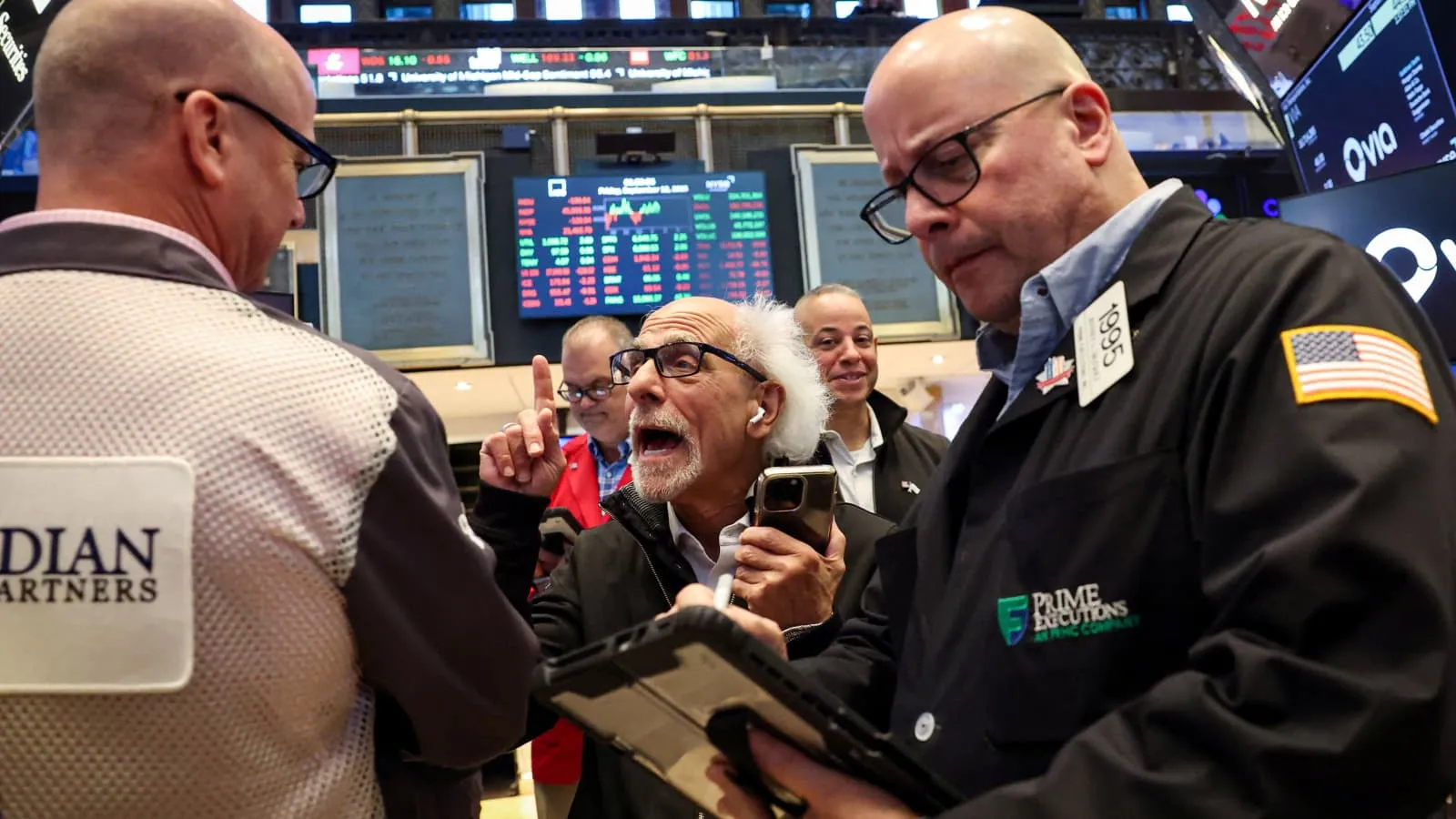Stocks Slide Further as Bond Rally Deepens Amid U.S. Credit Concerns
Stocks continued to retreat on Friday as investors flocked to the safety of government bonds, spooked by renewed worries over lending practices among U.S. regional banks. Meanwhile, gold appeared set to notch its ninth consecutive week of gains, underscoring the flight to safety across global markets.
Asian equities fell around 0.9%, led lower by financial stocks, while U.S. equity-index futures slipped 0.7%, signaling further losses after Thursday’s decline. The selloff in regional lenders followed ripple effects from the collapse of subprime auto lender Tricolor Holdings, which reignited concerns about credit quality and risk exposure. European shares were also on track to open in the red, reflecting the global nature of the unease.
As investors sought refuge, gold and silver surged to new record highs. Safe-haven demand was amplified by rising fears over the health of the U.S. credit market and renewed tensions between Washington and Beijing.
Treasuries extended their rally, pushing the two-year yield to its lowest level since 2022 and the 10-year yield below 4%. The dollar weakened, while the yen climbed past 150 per dollar and the Swiss franc also strengthened.
These moves reflect mounting anxiety about the U.S. credit landscape a stark contrast to the exuberance that recently drove stocks to record levels. The banking sector’s struggles have added to a long list of headwinds, from the looming government shutdown to concerns about a potential AI bubble and fresh U.S.-China trade disputes.
“This banking scare in the U.S. is more about sentiment and liquidity than a systemic credit meltdown,” said Dilin Wu, strategist at Pepperstone Group Ltd. “We’re seeing a wave of global risk aversion the fundamentals are mostly stable, but fear is steering the market.”
Elsewhere in Asia, markets mirrored the nervous tone. Shares in Hong Kong and mainland China fell more than 1.5%, with tech names bearing the brunt of the selloff. Hong Kong’s technology index slid 3.1%, while Taiwan Semiconductor Manufacturing Co. lost 2.4% in Taipei.
U.S. Treasury yields continued to decline, with the 10-year yield falling three basis points to 3.94%. In Australia, yields on comparable bonds dropped six basis points to 4.10%, marking the lowest level since April. “The Treasury rally is clearly a safe-haven play,” noted Anna Wu, cross-asset strategist at Van Eck Associates. “There’s a bit of a knee-jerk reaction as investors brace for fallout from the credit jitters.”
Thursday’s sharp drop in regional bank shares underscored those concerns. The S&P Regional Banks Select Industry Index plunged 6.3%, its steepest fall since April, when tariff worries last rattled the sector. Zions Bancorp tumbled 13% after disclosing a $50 million charge-off linked to a California Bank & Trust loan, while Western Alliance Bancorp sank 11% on news of exposure to the same borrower.
The back-to-back collapses of Tricolor Holdings and auto-parts maker First Brands Group have traders on edge, worried that more credit-related shocks could emerge. The anxiety even spilled over to Asian financial stocks, which declined in sympathy.
“This kind of stress will likely prompt investors to pull back and reduce risk,” said Vishnu Varathan, head of macro research for Asia ex-Japan at Mizuho Bank. “Asian markets will be watching closely for any spillover effects or hidden exposures.”
In trade developments, the White House is reportedly preparing to ease tariffs on the U.S. auto sector a potential win for carmakers that have lobbied to soften the blow from record-high import duties. Still, renewed U.S.-China tensions remain a drag on global equities, and analysts at Morgan Stanley warned that the selloff in Asia and emerging markets could exceed expectations given elevated valuations.
“Recent feedback from U.S. clients suggests that experienced investors are adopting a more defensive stance, focusing on quality and yield,” strategists led by Jonathan Garner wrote in a note.
In Japan, Bank of Japan Governor Kazuo Ueda signaled that the central bank may continue normalizing policy if confidence in the economic outlook improves, leaving the door open to a potential rate hike. Separately, Japan’s ruling Liberal Democratic Party is in delicate coalition talks with opposition group Ishin ahead of a key parliamentary leadership vote, with the odds of a deal currently viewed as even.
On the geopolitical front, President Donald Trump and Russian leader Vladimir Putin agreed to meet in Budapest following a two-hour phone call, just a day before Trump’s scheduled meeting with Ukrainian President Volodymyr Zelenskiy.
Oil prices also remained under pressure, poised for a third straight weekly loss as oversupply worries dominated. Brent crude hovered near $61 a barrel amid speculation that a new meeting between Trump and Putin could lead to an increase in output from OPEC+ members, deepening the global glut.
Taken together, the week’s market action underscores a shift in investor mood from optimism and record highs to caution and capital preservation. With banking jitters resurfacing and global uncertainties piling up, traders appear more intent on seeking shelter than chasing risk.

Subscribe to our newsletter!
As a leading independent research provider, TradeAlgo keeps you connected from anywhere.








